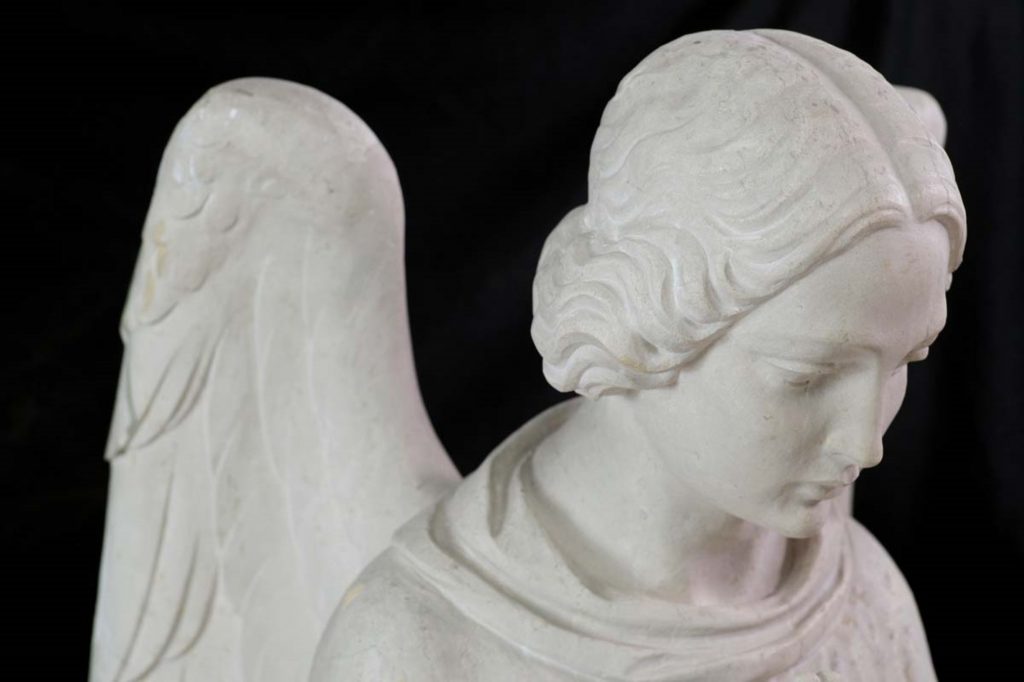A pair of 1940s hand carved marble statues of ministering angels were rescued by Olde Good Things from a massive sugar baron’s estate with a vibrant history. These angels are in excellent condition and were recovered from the sanctuary of a mansion that wears multiple faces – manor house, Divine Order, orphanage, and school.
The story of the estate begins in 1906 with wealthy sugar importer George R Mosle. The sugar baron’s company, Mosle Brothers, was an agent and banker for Cuban sugar plantations prior to the Spanish-Cuban and Spanish-American wars. Mosle brought sugar-cane growers and their families to the US and paid to build up their plantations in a new country.
Mosle built an estate named Hillandale near the captains of industry in Far Hills, New Jersey. The sugar empire sprawled across 32 acres. A mansion fit for a sugar baron was invoked. Mosle’s mansion was designed by estate architect Grosvenor Atterbury.
View online – Pair of 1940s Gray Statuary Hand Carved Marble Statues of Angels
Atterbury was a noted regional architect, and his legacy is a bit offbeat. He designed both estates and urban buildings. Atterbury’s ongoing interest in urban design, housing, and social issues was a signature of his work. The architect continued to use the same luxury design on estates and structures for the working poor of New York City; he experimented with lowering the cost of materials by various means throughout his life.
The manor at Hillendale was 18,000 square feet of stone and brick, with soaring windows, fireplaces, wood, and terracotta tile. Original details of the mansion, which is on the market, include a wood-lined butler’s pantry and a grand stone patio.
According to the Historical Society of Somerset Hills, German submarines torpedoed many of Mosley’s ships during World War I. He was refused post-war retribution payment, forcing him into bankruptcy.
The grand estate was put up for auction and purchased by Sisters of St. John the Baptist in 1926. New use demanded new additions for the Mount Saint John Convent, which converted the estate into an orphanage.






